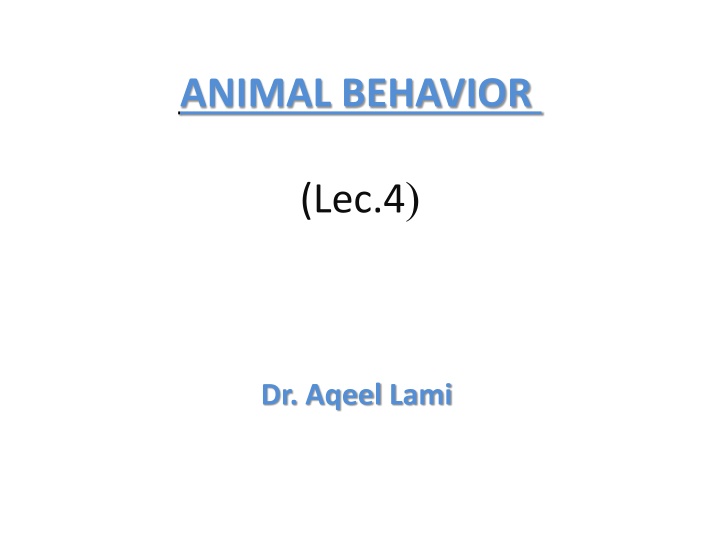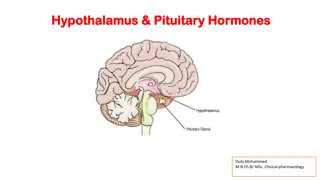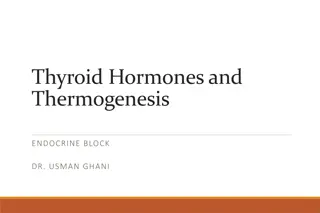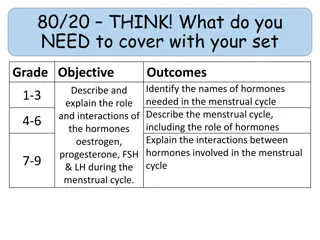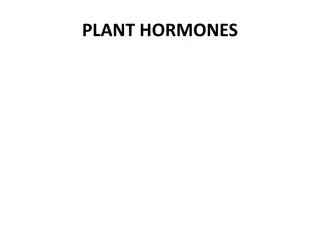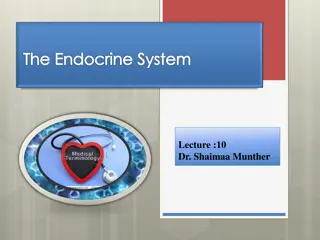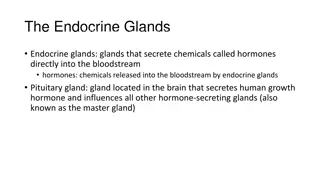Insights into Animal Behavior and Hormones
Explore the fascinating world of animal behavior, from the deception of recognition mechanisms in gulls to Karl von Frisch's experiments on fish sensory abilities. Learn how behavioral assays shed light on animal sensory powers and how hormones play a crucial role in regulating animal behavior. Discover how hormones circulate in animals' bloodstream, affecting their metabolism and behavior over varying time scales.
Download Presentation

Please find below an Image/Link to download the presentation.
The content on the website is provided AS IS for your information and personal use only. It may not be sold, licensed, or shared on other websites without obtaining consent from the author.If you encounter any issues during the download, it is possible that the publisher has removed the file from their server.
You are allowed to download the files provided on this website for personal or commercial use, subject to the condition that they are used lawfully. All files are the property of their respective owners.
The content on the website is provided AS IS for your information and personal use only. It may not be sold, licensed, or shared on other websites without obtaining consent from the author.
E N D
Presentation Transcript
ANIMAL BEHAVIOR ( (Lec.4 Dr. Aqeel Lami
ANIMAL BEHAVIOR Dr. Aqeel Lami THE MACHINERY OF BEGAVLOUR supernormal stimulus in a sense deceives the egg recognition mechanism of x the gull. In nature, the mechanism works to distinguish eggs from other objects; but it can be tricked by experiment. However, the main conclusion \ from Baerends' experiment is that herring gulls recognize eggs mainly by the criteria of size and stippling.
. 'Behavioural assays', such as the egg retrieval response of birds, not only 1 reveal what stimulus pattern is recognized by the animal, they are also a 1 revelatory method of studying the sensory powers of animals. If an animal 1 can be shown, by appropriately controlled experiments, to behave in 1 response to some property of the environment, it must be able to sense it. .
Karl von Frisch applied the method to demonstrate the hearing ability and colour sensitivity of fish. In that case, the physiologist von Hess had asserted that fish are colour blind and deaf; von Frisch doubted the assertion, and he successfully trained minnows to distinguish colours by rewarding them with food, and catfish to come out of a tube when he blew a whistle. In both experiments he used a behavioural response to discover a sensory ability.
. Hormones: The nervous system controls the behaviour of animals over a short time scale, of matters of seconds or micro-seconds. Other factors control it over longer terms of days, months, or even years; the most important of these are hormones. So.me hormones act quickly; but wo shall concentrate here on those with relatively slow effect. Hormones are chemicals that circulate in the bloodstream of animals, regulating the animal s metabolism and behaviour. They are released by special glands, such as the pituitary gland at the base of the brain, and the gonads. (the ovaries in the female, the testes in the male).
The glands release their hormones into the blood; some other organ will then respond to the increased level of hormone circulating in the blood. The responsive (or target) organ is often, but not always, the nervous system. An example of a target organ other than the nervous system is the effect of die hormone testosterone in the African clawed toad. Testosterone is released by the testes An increase in the amount of testosterone in the clawed toad s blood stimulate- of special 'nuptial pads' on the males front legs, which the embrace, the female while mating
